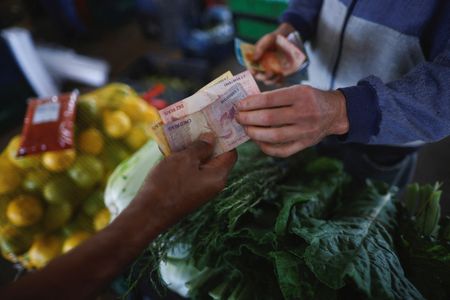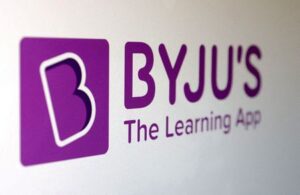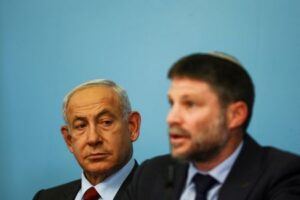By Marcela Ayres
BRASILIA (Reuters) -Brazil’s economy surprised to the upside in the second quarter, increasing bets on an imminent interest rate hike to curb inflationary pressures as the central bank gears up for its upcoming policy decision this month.
The strength of the country’s services and industrial sectors between April and June offset the impacts of deadly floods in a southern state, bolstering expectations for a solid full-year performance.
Gross domestic product expanded 1.4% in the three months through June 30 on a sequential basis, accelerating from the revised 1.0% growth recorded in the first quarter, statistics agency IBGE said on Tuesday.
The quarter-on-quarter performance was above the 0.9% increase expected in a Reuters poll of economists. Year-on-year growth reached 3.3%, surpassing the 2.7% increase projected in the poll.
“Overall data suggest a resilient economy, and the exchange rate hasn’t recovered. In other words, two key conditions for a rate hike are met,” said Jose Francisco Goncalves, chief economist at Banco Fator, who expects a 25 basis-point increase at the central bank’s next policy meeting on Sept. 17-18.
Andre Meirelles, head of allocation and distribution at InvestSmart XP, said the GDP growth highlights the strength of the Brazilian economy, which continues to surprise on the upside despite a double-digit interest rate.
The central bank has kept its benchmark interest rate steady at 10.50% since June.
“Today’s very strong domestic demand data increase significantly the odds of a rate hike at the September meeting,” said Goldman Sachs economist Alberto Ramos.
The data affected interest rate futures, which showed an increased probability of a 50 basis-point hike at the central bank’s upcoming policy meeting, now at 40%, compared with a 60% chance of a 25 basis-point increase.
Previously, there was a stronger consensus for a 25 basis-point hike, especially after central bank chief Roberto Campos Neto said the bank remained data-dependent and that any rate adjustment, if needed, would be gradual.
STRONG PACE
On the supply side, the main contribution for the Brazilian economy in the second quarter came from the industrial sector, which expanded 1.8% from the previous three-month period.
The services sector, the driving force behind Latin America’s largest economy, also contributed with a 1.0% increase from the first quarter. The farm sector, on the other hand, decreased 2.3%.
On the demand side, fixed business investment increased by 2.1%, while household consumption – buoyed by a strong labor market – rose 1.3%, the same growth rate recorded by government spending.
“The pace of growth is expected to remain strong, still driven by momentum from a heated labor market and better credit conditions for households and businesses compared to the previous year,” the Finance Ministry said in a statement, adding it will revise its GDP projection upwards on Sept. 17.
Speaking to reporters, Finance Minister Fernando Haddad said the annual expansion could surpass 2.7% or 2.8%. In July, the government had kept its GDP growth forecast unchanged at 2.5% for the year.
In May, floods that devastated Rio Grande do Sul state, killing more than 180 people and displacing hundreds of thousands, prompted a series of federal government aid measures totaling more than 27 billion reais ($4.8 billion).
Many economists believe this assistance mitigated the expected losses from the disaster.
($1 = 5.6146 reais)
(Reporting by Marcela Ayres; Editing by Gabriel Araujo, Angus MacSwan and Jonathan Oatis)





